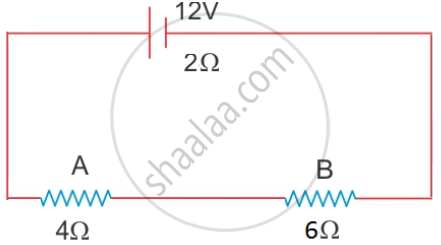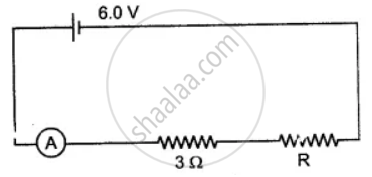Advertisements
Advertisements
प्रश्न
You have three resistors of values 2Ω, 3Ω and 5Ω. How will you join them so that the total resistance is more than 7Ω?
1) Draw a diagram for the arrangement
2) Calculate the equivalent resistance.
उत्तर
To get total resistance more than 7Ω. We can connect 2Ω,3Ω and 5Ω in series.
1)

2)
`R_"equivalent"` = 2 + 3 + 5 = 10Ω
APPEARS IN
संबंधित प्रश्न
A battery of emf 12 V and internal resistance 2 Ω is connected with two resistors A and B of resistance 4 Ω and 6 Ω respectively joined in series.

Find:
1) Current in the circuit
2) The terminal voltage of the cell
3) The potential difference across 6Ω Resistor
4) Electrical energy spent per minute in the 4Ω resistor.
By what other name is the unit joule/coulomb called?
What do you understand by the term "potential difference"?
What is Ohm's law? Explain how it is used to define the unit of resistance.
Find the resistance of a conductor if the electric current flowing through it is 0.35 A when the potential difference across it is 1.4 V.
Explain why potential difference is always less than the e.m.f. of a cell?
Draw a graph of Potential difference (V) versus Current (I) for an ohmic resistor. How can you find the resistance of the resistor from this graph?
The figure shows a circuit. When the circuit is switched on, the ammeter reads 0.5 A.

(i) Calculate the value of the unknown resistor R.
(ii) Calculate the charge passing through the 3 Ω resistor in 120 s.
(iii) Calculate the power dissipated in the 3 Ω resistor.
Potential near a charge is the measure of its ______ to bring a positive charge at that point.
Exercise.
Calculate the amount of charge that would flow in 2 hours through an element of an electric bulb drawing a current of 2.5 A.
